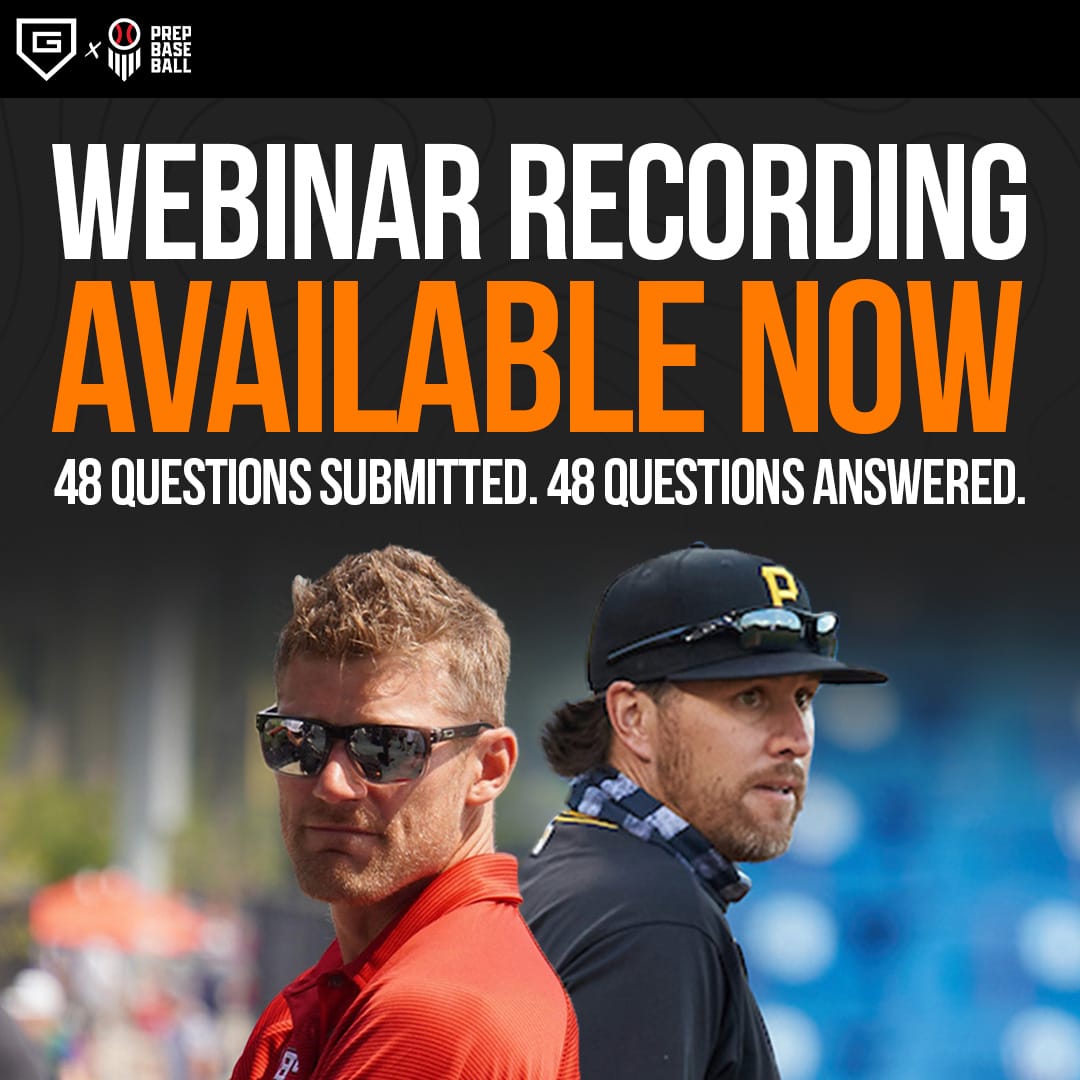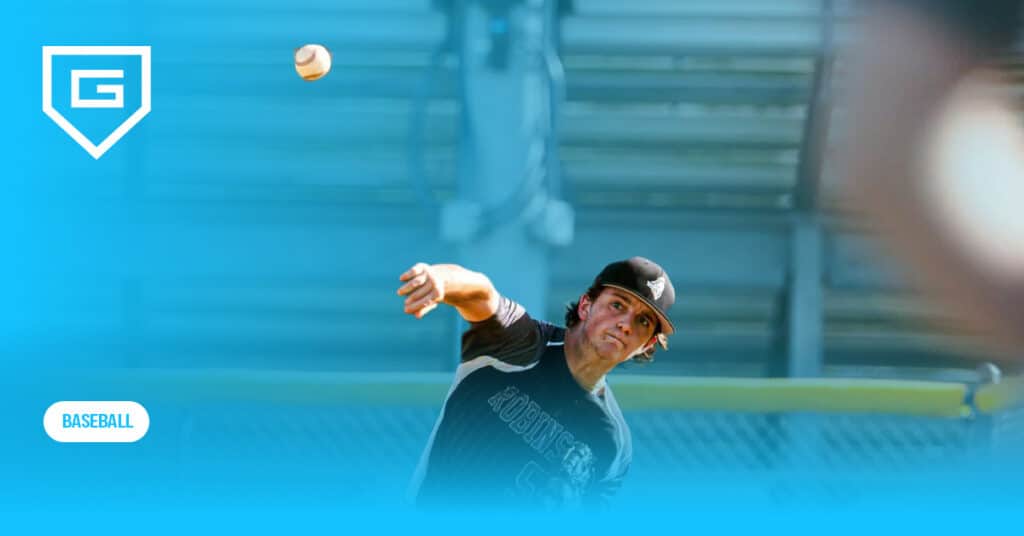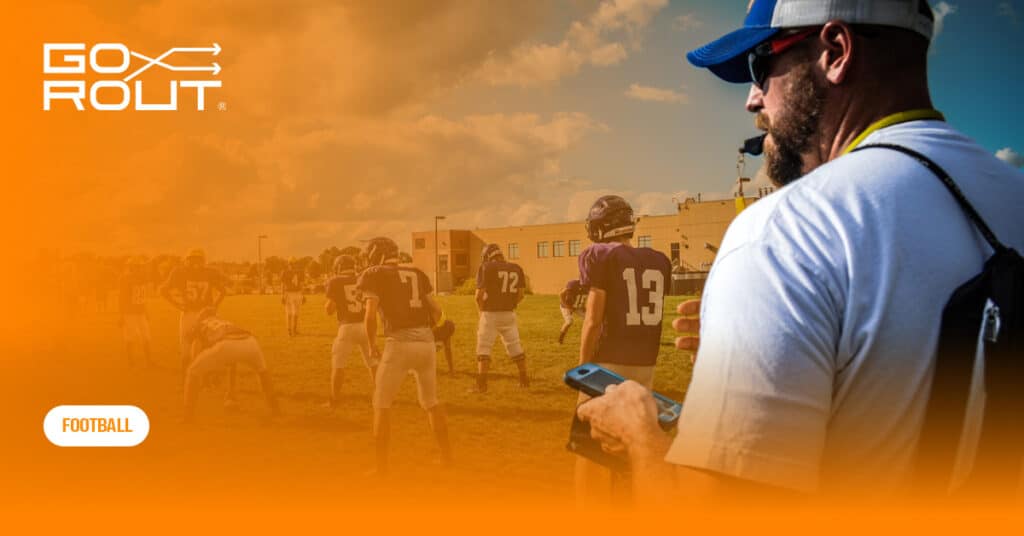Outfield Drills for Youth Baseball: The Complete Coach’s Guide
Reading Time: 11 minutes
Reading Time: 11 minutes
Playing in the outfield takes a unique set of skills. A good outfielder needs quick reactions, solid technique, and the confidence to chase down fly balls and make crucial throws.
The right outfield drills can turn hesitant young players into defensive standouts who can save runs and sometimes change the whole game with a big play.
This guide walks you through proven outfield drills for youth baseball that build tracking, catching, and throwing skills. Your players will start having more fun, and you’ll notice real improvement once the games roll around.
The Basics Of Outfield Drills For Youth Baseball
Outfield skills are essential in youth baseball as good outfielders prevent extra bases, support pitchers, and turn potential hits into outs, directly impacting the team’s success.
Key responsibilities for youth outfielders include reading the ball off the bat, catching fly balls, making accurate throws, backing up infield plays, and covering ground.
There are three outfield positions:
- Left fielder: Covers the left third of the outfield
- Center fielder: Takes the middle and acts as the outfield captain
- Right fielder: Handles the right third of the outfield
Communication is key—outfielders have to call for fly balls and coordinate with teammates to avoid collisions and make sure every play is covered.
League coaches play a big role by introducing proper techniques, building confidence, and highlighting communication and teamwork.
They teach these skills through consistent practice, positive feedback, and clear instruction – helping young athletes become reliable outfielders.
Essential Gear For Youth Baseball Outfielders
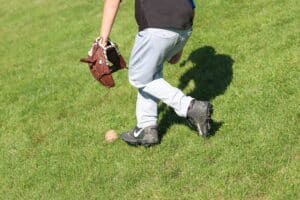
Playing outfield calls for specific gear. The right equipment keeps players safe and helps them play their best.
A quality outfield glove is the most important piece of youth baseball equipment. Look for gloves with deep pockets – between 10 and 13 inches long, depending on age and build. That extra reach helps with fly balls.
When it comes to cleats, pick ones with solid ankle support and sturdy rubber or plastic spikes. Metal cleats are usually off-limits in youth leagues.
Outfield safety essentials:
- Sunglasses (sports-grade with UV protection)
- Baseball cap or hat
- Sunscreen (minimum SPF 30)
- Water bottle for hydration
Good baseball apparel makes a difference, too. Moisture-wicking shirts keep players dry, and sliding shorts save their skin on diving catches.
Weather changes fast—a light jacket or pullover works for chilly days.
Don’t forget a bat bag. It keeps players’ gear organized and makes it less likely they’ll leave something behind.
Check your youth baseball gear before every season. Kids grow fast, and last year’s cleats might suddenly be two sizes too small.
Creating Effective Practice Plans For Baseball Outfield Drills
Planning outfield practices the right way keeps kids interested and helps them build the skills they need. You want some structure, but don’t be afraid to mix things up to keep it fun.
Sample 60-minute outfield practice plan:
- 5 min: Warm-up (jog, dynamic stretching)
- 10 min: Groundball technique drills
- 10 min: Throwing accuracy drills
- 10 min: Fly ball tracking drills
- 15 min: Game-like scenarios (situations with runners)
- 10 min: Fun competitive drill (ring of fire or throwing competitions)
Wrap up practice with something fun and competitive. Ring of fire or relay races keep the energy high and help kids bond. A little friendly competition goes a long way.
Watch for progress and adjust your plans as your players improve. Celebrate the wins, even the small ones—it keeps everyone motivated.
Mastering The Ready Position For Outfielders
The ready position is where great outfield play starts. The stance allows players to react instantly to any ball hit their way. When a player is in the ready position, they feel balanced and set to move in any direction. That is the goal.
- Feet should be shoulder-width apart, with weight on the balls of the feet. It provides stability and enables quick movement, prepared to spring in any direction at any second.
- Knees should be slightly bent—not locked, but not in a deep squat. That slight bend helps maintain balance and readiness to push off.
- Hands and glove position matter: the glove should be held at waist level, with the throwing hand just above it.
Coaches can have players start in the ready position, then call out directions—left, right, back, in. Players take a couple of steps that way, then reset. It is simple but effective.
The drop-step drill is another beneficial exercise. Players start in their stance, then practice turning and running as if chasing a fly ball over their shoulder.
- Positioning a player two steps behind a targeted catch can enhance fielding technique and reaction time.
- The stance should not be too tiring; it must be comfortable enough to hold between pitches, or young players may lose focus or become sloppy.
Young players often forget their stance, so coaches should remind them to reset to the “ready position” after every pitch—a quick verbal cue can be very effective.
Consistent youth baseball practice drills are key. The more players start from the ready position, the more natural it becomes, and the results truly pay off.
Fielding Ground Balls In The Outfield
Ground balls in the outfield might not get a player’s heart racing like fly balls, but they’re just as critical to nail down. If players can field ground balls well, they’ll cut down on extra bases and keep runners in check.
Why do ground ball skills matter?
Strong ground ball skills can turn a would-be triple into a routine single. Fast grounders that sneak past can quickly cost the team. Players who field ground balls the right way earn more trust from coaches and more time on the field.
Here’s a six-step technique for fielding ground balls:
- Pre-step: Start moving toward the ball as soon as it’s hit.
- Lower your body: Bend at the knees, not your waist.
- Keep your head down: Watch the ball all the way into your glove.
- Field in front: Get the ball out in front of your body, not underneath.
- Use two hands: Bring your glove and throwing hand together.
- Move through the ball: Keep your momentum going as you field it.
After fielding the ball, step into the throwing position to make accurate throws while maintaining balance and readiness for any unexpected plays.
Don’t field to the side—move through the ball and keep it right in front. It’s tempting to get lazy, but that’s where mistakes sneak in.
What are effective ground ball drills?
- Try the Roll and Recover Drill. Roll all grounders and work on players’ form. Mix up the speed and bounce to keep it interesting.
- For bare-hand work, grab a tennis ball. It feels weird at first, but players will get used to putting their bodies in front of the ball.
- The Situation Drill mimics real games. Field grounders with runners on and make the right throw to the cutoff man. It’s a little stressful, but that’s the point.
Players should charge the ball hard, but stay under control. Field it cleanly first, then focus on making a good throw.
Catching Fly Balls: Building Confidence And Consistency
Catching fly balls can be nerve-wracking for young players. The fear of dropping one in front of their teammates can be intimidating. But with some practice, this skill gets a lot less scary.
First things first: Get into position early. Players want to be under the ball with time to set up. They should keep the glove up where it can be seen, not down by the side.
Players should:
- Start in an athletic stance—knees bent, on their toes.
- Never take their eyes off the ball when it leaves the bat.
- Go to where the ball’s headed – not just wait for it.
- Use two hands if they can. It’s just safer.
To improve catch-to-release speed, incorporate drills instructing players to catch the ball over their throwing shoulder. This technique helps build confidence and agility in young outfielders.
Tracking the ball takes reps. A lot of kids get scared and look away, which never helps. Encourage them to watch the ball the whole way, even if it feels awkward.
Try these simple drills to build confidence:
- Partner Toss: Stand about 15 feet apart and toss pop flies back and forth.
- Self-Toss: Players toss the ball as high into the air as they can and practice catching it with two hands.
- Call It Out: Have multiple players line up and throw or hit fly balls in between them. Players should work on communication, yelling “I got it!” to call off their teammates and ensure only one player goes for the ball.
Keep fly ball practice light and positive. Celebrate the catches, and if someone drops one, just encourage them to try again. Everyone’s been there.
Throwing Fundamentals For Outfielders
Outfielders’ arms are weapons—good throws begin with proper body position and mechanics that keep the arm healthy and throws accurate.
Players should set up with feet shoulder-width apart, vertical to the target, and point the glove-side shoulder where the ball should go. They should hold the ball across the seams with the index and middle fingers for backspin and straight throws.
- Practice the crow hop—a small jump that shifts weight forward, adds power, and keeps the shoulder safe. Follow through so the throwing hand finishes near the opposite hip.
- For relay throws, form lines of three, set cones 60 feet apart, and practice quick catches, transfers, and pivots.
- The ground ball technique drill builds accuracy by fielding five grounders with proper footwork and throwing each to a specific target – whether it be a base or a coach in a set location.
- Long toss—starting at 30 feet and backing up—improves arm strength.
The player receiving the throw should call out “cut” or a teammate’s name before and as the outfielder throws to ensure clear communication on the field.
Outfield Drills For Game-Like Situations
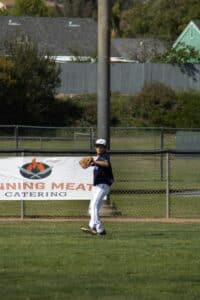
Practice is good, but realistic practice is where outfielders truly improve. Simulating game situations helps players handle pressure and unpredictability, making quick decisions and efficient relay throws.
Here are a few ideas.
- Communication challenge: Place 2-3 outfielders in position and hit flies between them. Players need to call out “I GOT IT!” three times really loudly, and they earn points for clear calls and making the catch. It prevents collisions and dropped balls, and friendly competition keeps it fun.
- Base backup relay: With a runner at home, hit balls to the outfield. Outfielders field and throw to the cutoff, while others back up the bases. This drill builds anticipation and teamwork.
- Target practice: Put some targets at each base, have outfielders field, and throw for accuracy while under pressure. Add some baserunners for an extra challenge. Always make sure to warm up players’ arms before starting.
Setting up competitive, game-like drills encourages growth where it matters most. Sharing success stories, like throwing out a runner stretching a double into a triple, boosts motivation.
Reaction And Agility Drills For Youth Outfielders
Quick reactions and agility make great outfielders, allowing them to chase down fly balls, change directions instantly, and make impressive catches. Drills that focus on these skills are essential.
Quick feet drills:
- Tennis ball drop reaction: One player drops a tennis ball without warning, and the other tries to catch it before it bounces twice. It sharpens reaction time.
- Directional call outs: Stand behind players and call left, right, back, or forward. Players take two quick steps in that direction, then reset, mimicking game reactions.
- Agility ladder work: Use patterns like in-and-out steps, lateral shuffles, and hopscotch. Go hard for 30 seconds, then rest.
Speed and explosiveness training:
- Cone direction changes: Set up five cones in a star. Players sprint to each cone and back, building speed and agility.
- Ball toss and sprint: Toss a tennis ball behind the player, who tracks, catches, and then sprints forward.
Keep drills competitive and fun to maintain engagement and enthusiasm.
Teaching Outfielders To Read Hits And Anticipate Plays
Reading the ball off the bat sets great outfielders apart. You can help young players improve by focusing on visual cues and steady practice.
Teach outfielders to watch the hitter’s stance and bat angle for clues: line drives come from a flat bat angle, pop-ups from an upward angle, and deep flies from solid contact with a slight upward swing. Highlight correct glove positioning and tracking the ball during drills.
Try this: stand about 20 feet away and toss or hit different fly balls, having players call out “line drive,” “pop-up,” or “deep fly” as soon as the ball leaves the bat.
For balls hit straight at them, teach the “drop step and turn” move. Players should move back quickly if a ball is lost overhead while keeping their eyes up.
Build baseball IQ by reminding outfielders to consider outs, runner positions, and where to throw. Regular, challenging reps build confident, skilled outfielders.
Developing Skills In Little League: Age-Appropriate Outfield Drills
Playing outfield in Little League takes specific skills, which grow as kids do. Using age-appropriate drills helps your players build confidence and match their development.
Stick to the basics for your youngest outfielders (ages 6-8). These kids need simple, fun activities that build good movement habits.
- Catch the cloud: Toss soft, high balls and have players call “I got it!” before catching.
- Freeze tag: Players freeze in a fielding position when tagged.
- Roll and throw: Roll grounders to players who field and throw to a target.
Intermediate players (ages 9-12) can handle tougher drills that mix skills together. These drills help them make better decisions, something Little League coaches always want to see.
- Drop-step drill: Players practice turning and running for over-the-shoulder catches.
- Communication circles: Groups of three outfielders call for pop flies together.
- Relay race: Practice fast, accurate relay throws from outfield to infield.
Bring progression drills that feel more like real games as your players get older. These will get them ready for tougher competition.
Try these three outfield drills that work on multiple skills at once:
- Dive and Recover: Safe diving practice with quick throws to the bases.
- Fence Awareness: Teach players how to track balls near the fence.
- Decision Stations: Quick-reaction drills for picking cutoff targets.
Keep practices upbeat and fun. Kids pick up skills faster when they’re enjoying themselves.
Building Teamwork And Communication In The Outfield
Good outfield play is more than just catching fly balls; it’s about teamwork and communication to avoid collisions and missed catches. Good outfielders work as a unit; verbal cues are their first line of defense.
Non-verbal cues like hand signals and pointing are important, especially when it’s loud. Players should raise their arms and point to indicate intent, so teammates stay aware.
The center fielder is the captain; they take charge of communication and have priority on reachable balls. Center fielders must be vocal and assertive, and lead the outfield with confidence.
Try these outfield communication drills:
- Gap communication drill: Two outfielders start 20 feet apart. The coach hits balls between them; players must call the ball and avoid collisions, building teamwork.
- Ready position practice: Players practice their stance, as well as verbal and physical communication, boosting team awareness and confidence.
How GoRout Diamond Changes Youth Baseball Practice

GoRout Diamond is a revolutionary baseball pitch-calling system. By simplifying the way coaches and players communicate, GoRout Diamond eliminates confusion, speeds up decision-making and boosts team performance with instant, secure messaging on the field.
How GoRout Diamond works for coaches

GoRout Diamond gives coaches a simple, easy-to-use web app to build and send pitch calls, defensive shifts and offensive plays with one touch.
The on-field app allows position-specific messaging, instant communication and real-time updates so coaches have complete control and flexibility during games and practices.
No WiFi is required with GoRout Air™, which uses a cellular network for seamless, reliable communication in any field.
Coaches also get access to AI Analytics, including pitch intent vs pitch result data reports and charts. It helps them optimize their coaching strategy.
Check out coaches’ testimonials and case studies for more information.
How GoRout Diamond works for players
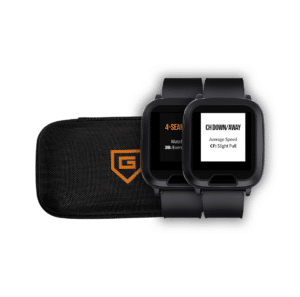
Players get coaches’ pitch calls right away on encrypted, weatherproof devices built for clear visibility in any condition.
With screens that can be customized and no setup needed, players won’t miss a sign, which cuts down on confusion and boosts their performance on the field. Each device is ready to use right out of the box, so players can just focus on the game.
Getting started is easy: choose a package that fits your team, get your devices and use the coaches app to start sending calls today. Every device comes with a full-coverage warranty.
Get a quote or visit the online shop.
Conclusion Outfield Drills for Youth Baseball
Outfield drills are key to developing young baseball players’ defensive skills, confidence, and teamwork. Focusing on fundamentals like catching fly balls, proper footwork, and quick throws, coaches help players become reliable outfielders.
Engaging age-appropriate drills build athletic ability and keep practices fun and motivating. Consistent practice, positive feedback, and a variety of drills keep players active, learning and enjoying every minute on the field.
FAQs About Outfield Drills for Youth Baseball
How do I make my youth baseball practice fun?
Add games, competitions, and relay races to drills. Use positive reinforcement and keep activities fast-paced to keep energy and excitement. Rotate stations and celebrate small wins to keep everyone engaged.
How do I become a better outfielder in baseball?
Work on reading the ball off the bat, proper footwork, and throwing accuracy. Repetition of catching fly balls and backing up plays will build confidence and skill.
How do I coach a 9 to 10-year-old baseball player?
Focus on fundamentals, clear instructions and short, varied drills. Teamwork, sportsmanship and making it fun. Encourage questions and celebrate effort as much as results.
How do you structure a youth baseball practice?
Warm up, then rotate through skill stations (hitting, fielding, throwing), game-like scenarios and finish with a fun scrimmage or relay. Always end with a team huddle and positive feedback.




